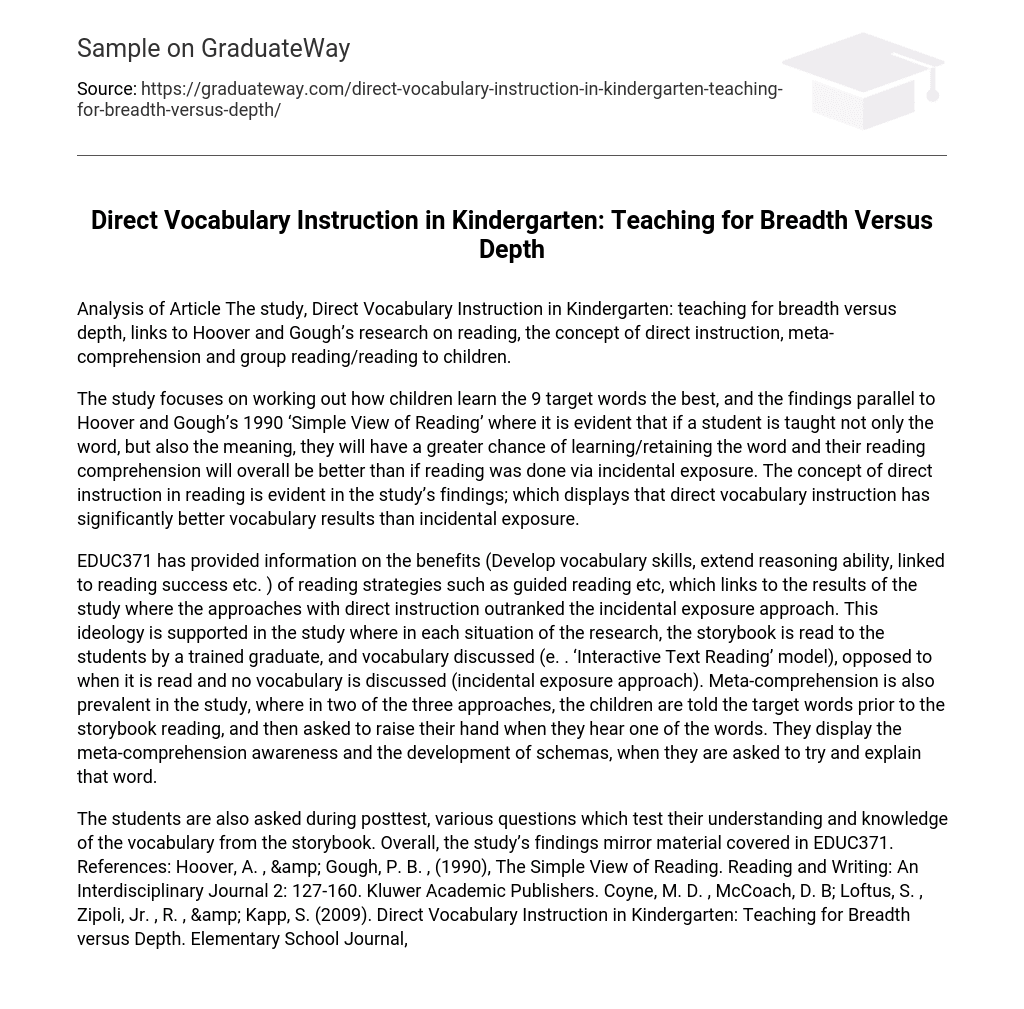Analysis of Article The study, Direct Vocabulary Instruction in Kindergarten: teaching for breadth versus depth, links to Hoover and Gough’s research on reading, the concept of direct instruction, meta-comprehension and group reading/reading to children.
The study focuses on working out how children learn the 9 target words the best, and the findings parallel to Hoover and Gough’s 1990 ‘Simple View of Reading’ where it is evident that if a student is taught not only the word, but also the meaning, they will have a greater chance of learning/retaining the word and their reading comprehension will overall be better than if reading was done via incidental exposure. The concept of direct instruction in reading is evident in the study’s findings; which displays that direct vocabulary instruction has significantly better vocabulary results than incidental exposure.
EDUC371 has provided information on the benefits (Develop vocabulary skills, extend reasoning ability, linked to reading success etc. ) of reading strategies such as guided reading etc, which links to the results of the study where the approaches with direct instruction outranked the incidental exposure approach. This ideology is supported in the study where in each situation of the research, the storybook is read to the students by a trained graduate, and vocabulary discussed (e. . ‘Interactive Text Reading’ model), opposed to when it is read and no vocabulary is discussed (incidental exposure approach). Meta-comprehension is also prevalent in the study, where in two of the three approaches, the children are told the target words prior to the storybook reading, and then asked to raise their hand when they hear one of the words. They display the meta-comprehension awareness and the development of schemas, when they are asked to try and explain that word.
The students are also asked during posttest, various questions which test their understanding and knowledge of the vocabulary from the storybook. Overall, the study’s findings mirror material covered in EDUC371. References: Hoover, A. , & Gough, P. B. , (1990), The Simple View of Reading. Reading and Writing: An Interdisciplinary Journal 2: 127-160. Kluwer Academic Publishers. Coyne, M. D. , McCoach, D. B; Loftus, S. , Zipoli, Jr. , R. , & Kapp, S. (2009). Direct Vocabulary Instruction in Kindergarten: Teaching for Breadth versus Depth. Elementary School Journal,





